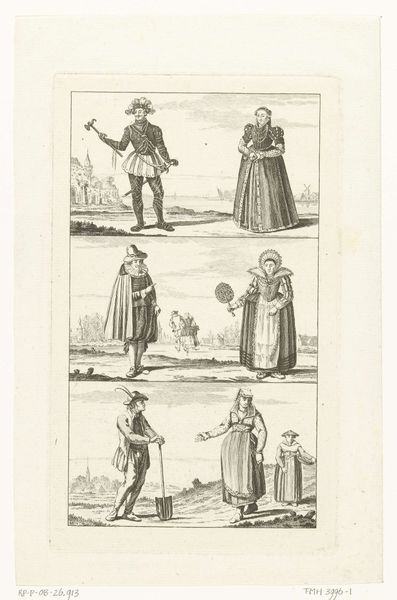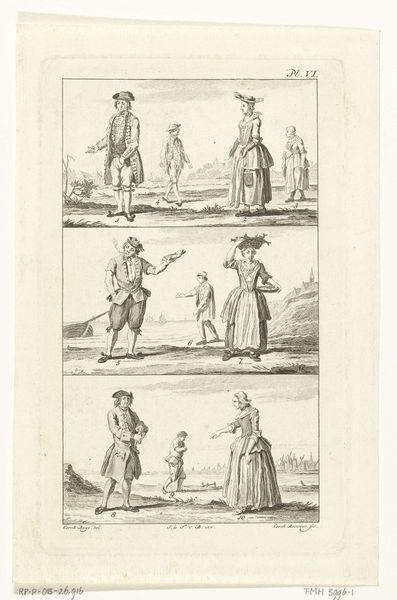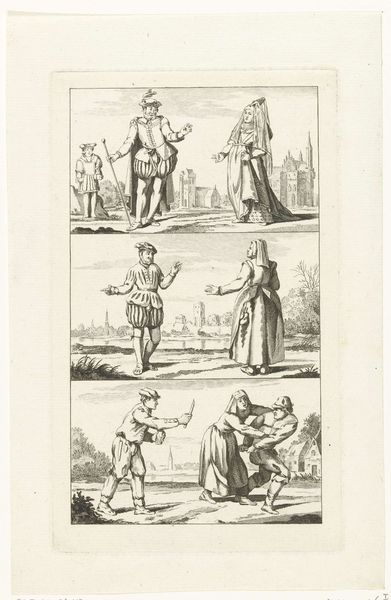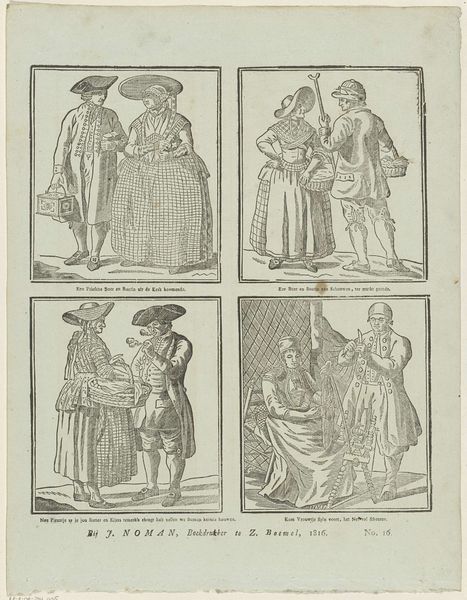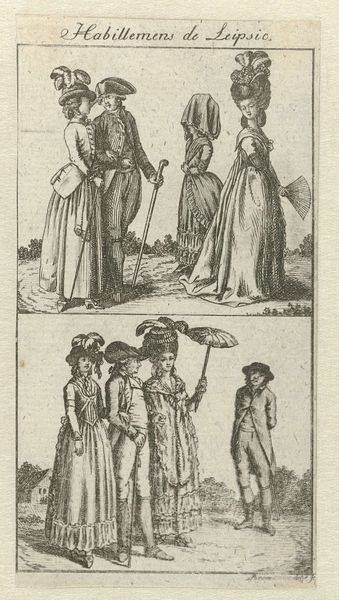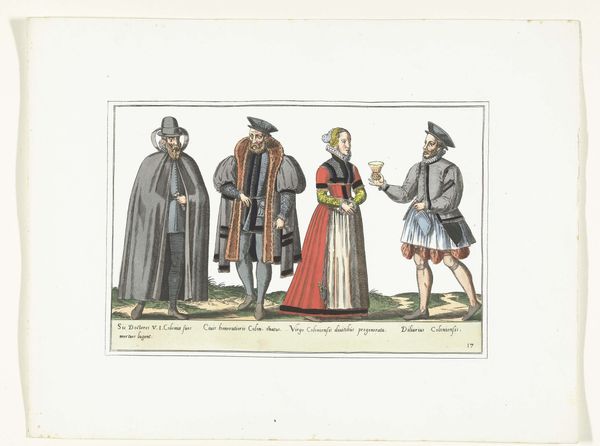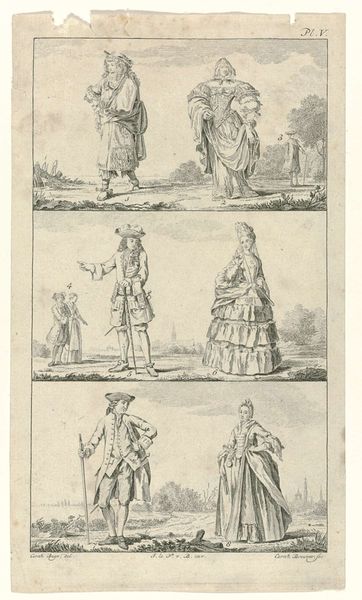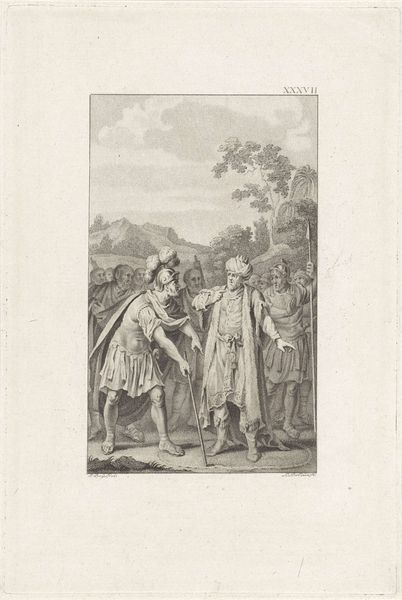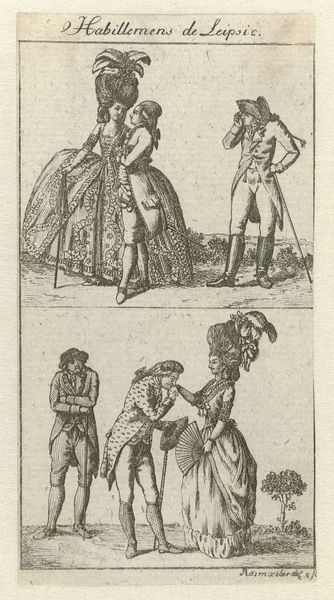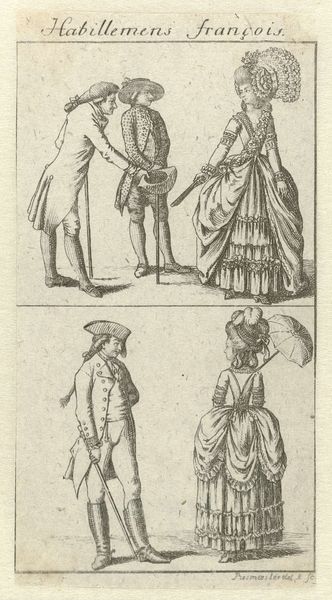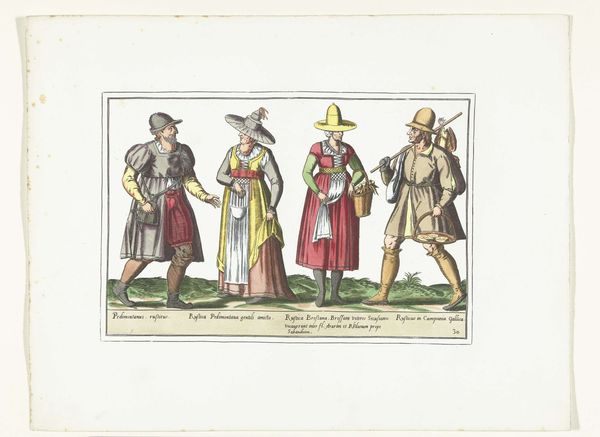
Drie landschappen met mannen en vrouwen in Hollandse klederdrachten, ca. 1775 1776
0:00
0:00
print, etching, engraving
#
portrait
#
dutch-golden-age
# print
#
etching
#
landscape
#
genre-painting
#
engraving
Dimensions: height 200 mm, width 120 mm
Copyright: Rijks Museum: Open Domain
Curator: Good day. We are here to discuss a rather curious piece titled "Three Landscapes with Men and Women in Dutch Costumes," created around 1775 by Cornelis Brouwer. It's currently held here at the Rijksmuseum. Editor: My first thought? It's like peering into a history book through a fashion blogger's lens. Each vignette seems frozen in a very formal sort of parade. Curator: Precisely! Brouwer employs a tripartite structure, segregating different landscapes, each populated by figures adorned in what would have been considered characteristic Dutch garb. Observe the details: the etching and engraving lend a certain precision, a documentary quality if you will, while still allowing room to portray elements of genre. Editor: It feels very deliberately arranged, doesn’t it? It’s not just a document of clothing; it’s telling us something about the social spaces these clothes belong to. Almost like a carefully constructed stage set. Are they archetypes or portraits, I wonder? They almost feel like characters in a play. Curator: The figures certainly border on the archetypal. While the technique doesn't allow for precise facial renderings, the costume – each ruffle, hat, and drape is meticulously detailed. The intention appears less portraiture and more about representing distinct Dutch identities tied to these locales. We can deduce something from what each segment chooses to present. Editor: Yes, look at the placement within the landscapes themselves, they become backdrops! Is the rigid presentation ironic somehow? Or sincerely ethnographic in intent? I like thinking about this and if it’s both. Curator: The intersection of both is what provides its appeal. Though the rigidness may give pause to those unfamiliar with period illustration and print work. This piece provides us insight into how the Dutch chose to present themselves— or wished to be seen. Editor: For me, looking at each little scene is akin to flipping through a deck of antique postcards. Little time capsules that tease much more than they reveal about past lives. Curator: Agreed. Through the lines etched meticulously, the intention transcends mere recording. It creates something layered; an artifact infused with social ambition and a very precise, tailored view of self.
Comments
No comments
Be the first to comment and join the conversation on the ultimate creative platform.
